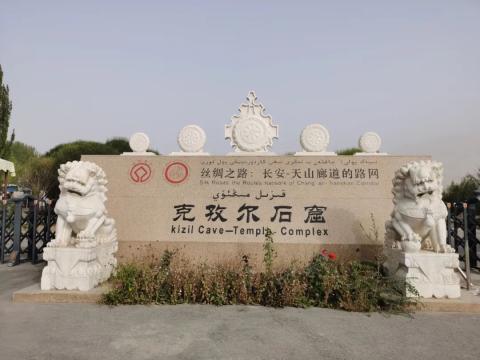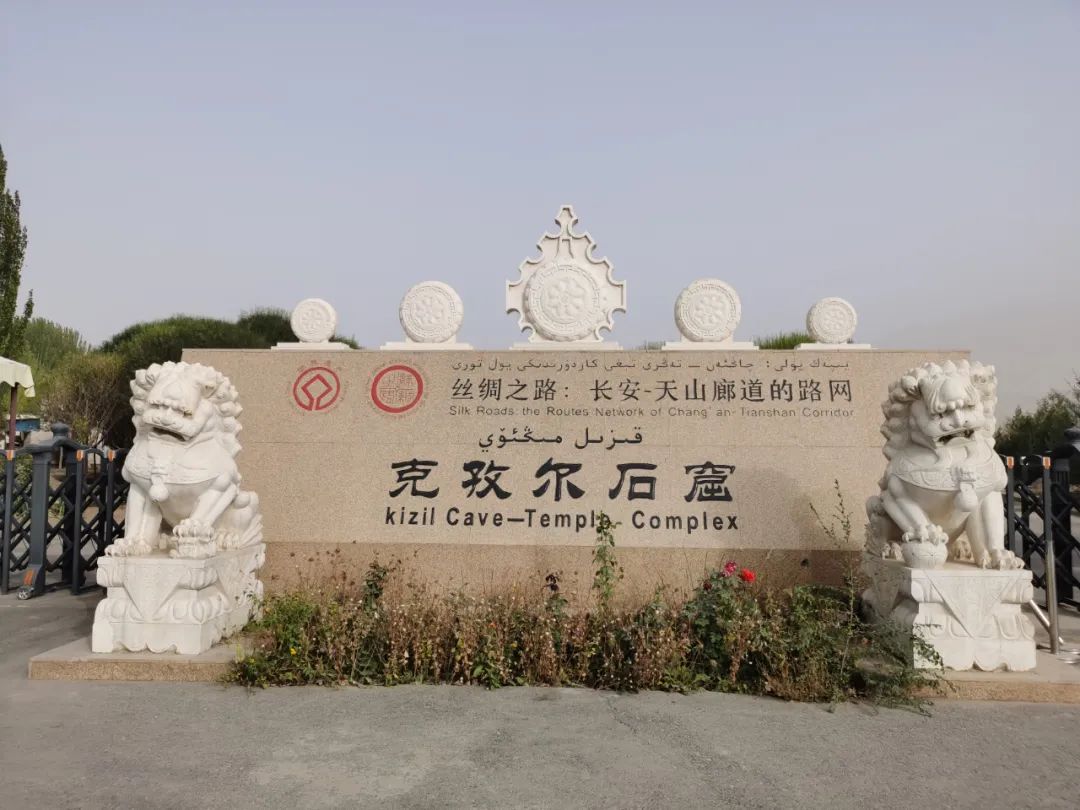
Southern Xinjiang was the first stop for Buddhism to be introduced from India to China. Therefore, there are many Buddhist sites here, leaving behind many Buddhist art treasures and many regrets caused by natural and man-made disasters.
On the third day of our trip to southern Xinjiang, we visited the Kizil Grottoes in Kuqa. The Kizil Grottoes are one of the four major Buddhist grottoes in China and the earliest one excavated.

Entering the scenic spot, first come to Kumarajiva Square. I have heard the story of Kumarajiva, prince of Qiuci, eminent monk, and translator. His statue stands in the square, dark, calm and solemn. Looking from a distance, it seems as if he is watching the Kizil Grottoes behind him. Having spent most of his life on the move, he seemed to have finally returned to his homeland.
Today, when I visited Kizil Grottoes, I naturally recalled a tragic past: 10-11 The religious wars of the 16th century destroyed much of the 20 It was looted again by foreign explorers at the beginning of the century. Few Buddha statues remain (most of which are still abroad), and the murals are also largely damaged. It is currently only open to tourists. 6 A cave, but through this 6 We can still get a glimpse of its former glory from the remaining fragments of murals.


 All the gold on the cassock of the Buddha statue has been stripped off
All the gold on the cassock of the Buddha statue has been stripped off
Standing donor image


The Tiangong Music Pictures in Cave 38. If you look closely, many of the patterns are three-dimensional.
Standing on the mountain of the grotto, you can also overlook the nearby mountains and rivers. I lamented that all the way from Kuqa, the Yadan landform was barren of grass, but here it became lush with water and grass. This natural environment gave birth to the glorious oasis civilization of the past and the Qiuci Kingdom on the ancient Silk Road.

During this trip, we also visited the Damagou Buddhist Cultural Site in Cele County, Hotan Prefecture. Although this classic is small, it is very exciting.

The Damagou ruins include three Buddhist temple ruins, among which the smallest Buddhist temple ruins in the world are mainly visited. This family Buddhist temple was built in the Wei and Jin Dynasties, which proves the enthusiasm of people at that time to worship Buddha. The Buddhist temple is less than 4 square meters, and is located in the center of a house of more than 30 square meters. The house has the functions of both protection and exhibition, with ruins in the middle and unearthed cultural relics on display around it. More than 20 sites have been excavated near the Taklimakan Desert with Dama Valley as the center, and the excavated Buddha statues and murals are very exquisite. Hotan is the first stop for Buddhism to be introduced into China, and Damagou itself also means the place where Buddhism gathers. We saw Gandhara-style murals here, and also admired the legendary Khotan School of painting - delicate brushstrokes, a combination of hardness and softness.

Apart from two security guards, there is only one person in charge of the scenic spot. He has been here since the exhibition hall was built, which has been fifteen years. Because there were very few tourists (we arrived at 3 in the afternoon and were the fourth or fifth visitors that day), he explained to us in detail the various aspects of the Dama Valley ruins.
Although the whole scenic area is not big, it is not easy to build, because the Taklimakan Desert can easily swallow everything, so a lot of effort was spent on planting trees here to prevent sand, and now a dense poplar forest of one kilometer in front of the gate has been formed. Damagou survived the Western exploration boom in the early 20th century, while the ruins represented by Dandan Uilik, dozens of kilometers to the north, were almost looted. However, because there is no museum in Cele County, there is only the approximately 30 This flat room can display some murals and Buddha statues. I am glad to see the historical gems today, but I also feel sorry for the deserted and limited exhibition conditions here.
There are still countless Buddhist sites in southern Xinjiang buried under the yellow sand and have not yet been excavated for various reasons. Looking forward to the day they see the light of day again!
